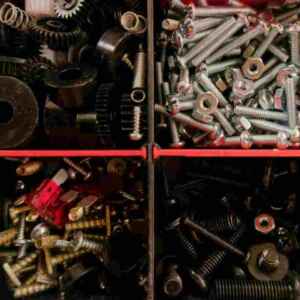
Table of Contents
Introduction
In the vast expanse of electrical components and solutions, stranded wire emerges as a
fundamental yet often underrated hero. Unlike its solid wire counterpart, stranded wire is
composed of numerous small wires twisted together, offering unparalleled flexibility and
resilience across a myriad of applications.
This article dives into the essence of stranded wire, exploring its construction, benefits,
applications, and the future of its use in our increasingly electrified world.
The Anatomy of Stranded Wire
Stranded wire is essentially a symphony of tiny, individual wire strands, harmoniously twisted to
form a single, cohesive conductor. This construction technique not only endows the wire with
exceptional flexibility but also enhances its strength and durability. Each strand within the wire
acts independently yet in concert, allowing the wire to bend and twist without compromising its
structural integrity or conductivity.
Advantages Over Solid Wire
While solid wire has its place in electrical work, particularly where rigidity is required, stranded
wire offers several compelling advantages:
● Flexibility: The primary benefit of stranded wire is its flexibility. It can be easily routed
through tight spaces and around sharp corners, making installation easier and more
efficient.
● Durability: The ability to withstand vibration and repeated movement without breaking
makes stranded wire ideal for applications subjected to constant motion or mechanical
stress.
● Conductivity: Though the differences are minimal, the increased surface area of
stranded wire can offer slightly better conductivity than solid wire of the same cross-
sectional area, especially in high-frequency applications.
Applications of Stranded Wire
The unique properties of stranded wire make it suitable for a wide range of uses, from everyday
electronics to critical industrial machinery.
Electronics and Appliances
In consumer electronics and household appliances, stranded wire is often used for internal
wiring and power cords. Its flexibility facilitates compact product design, while its durability
ensures that devices can withstand regular use without electrical failure.
Automotive Industry
The automotive sector relies heavily on stranded wire for wiring harnesses that connect various
components of a vehicle. The wires resistance to vibration and thermal expansion is crucial in
the harsh environment under the hood, where temperatures fluctuate widely, and movement is
constant.
Comparing Stranded Wire with Other Wire Types
In addition to solid and stranded wire, there are other wire types such as braided and tinned
wires, each serving specific needs within various applications.
● Braided Wire: Much like stranded wire, a braided wire consists of a number of smaller
wires braided together. This design not only provides flexibility and durability but also
enhances the wires resistance to interference, making it ideal for use in environments
where electromagnetic interference (EMI) is a concern.
● Tinned Wire: Tinned wire is essentially stranded or solid wire coated with tin. The tin
plating protects the copper from corrosion, making the wire more resilient in humid or
corrosive environments. This feature is particularly beneficial in marine applications and
outdoor settings where exposure to elements is inevitable.
Both braided and tinned wires complement the role of stranded wire by offering solutions for
specialized conditions.
While stranded wire provides the backbone for flexibility and durability, braided and tinned
variations extend the utility of wire in demanding environments, ensuring reliability and longevity
of electrical systems across a broader spectrum of applications.
Renewable Energy Systems
In renewable energy installations, such as solar panels and wind turbines, stranded wire
connects moving parts and conducts power over long distances. Its durability against
environmental stresses like wind, rain, and temperature changes is indispensable for reliable
energy production.
Aerospace and Marine
The aerospace and marine industries require materials that can survive extreme conditions.
Stranded wire, with its combination of flexibility, durability, and conductivity, meets these
demands, ensuring the safety and functionality of aircraft and sea vessels.
Technological Innovations and Material Advancements
The evolution of stranded wire technology is closely tied to advancements in materials science
and manufacturing processes. Copper remains the most common material for stranded wire due
to its excellent conductivity and flexibility. However, alloys and composite materials are being
explored for their potential to offer lighter weight, higher strength, and better corrosion
resistance.
Insulation and Coating Technologies
Innovation in insulation and coating materials has significantly enhanced the performance and
longevity of stranded wire. Materials such as polyethylene, PTFE, and silicone offer improved
thermal resistance and environmental protection, broadening the wire's applicability in extreme
conditions.
Connectivity and Smart Technologies
The integration of smart technology with stranded wire, such as embedded sensors for
monitoring wear and tear or conductivity, is on the horizon. This could revolutionize predictive
maintenance practices, allowing for the timely replacement of wires before they fail, thus
preventing costly and dangerous accidents.
Looking Ahead: The Future of Stranded Wire
As we propel into a future dominated by electrification and smart technologies, the importance
of stranded wire only grows. Its role in renewable energy systems, electric vehicles, and
connected devices underscores its significance in achieving a sustainable, technologically
advanced society.
Sustainability and Recycling
The push for more sustainable manufacturing processes and materials highlights the need for
stranded wire to be both eco-friendly and recyclable. Research into biodegradable insulation
materials and more efficient recycling techniques for copper and other metals used in stranded
wire is ongoing, promising a greener future for this essential component.
Conclusion
Stranded wire combines flexibility with strength, playing a pivotal role in powering and
connecting the modern world. From the devices in our homes to the cars we drive, and the
renewable energy systems we rely on, its presence is both ubiquitous and indispensable.
As technology advances, the continued innovation in materials and manufacturing processes
will ensure that stranded wire remains at the forefront of electrical and electronic engineering,
driving efficiency and reliability across countless applications.

